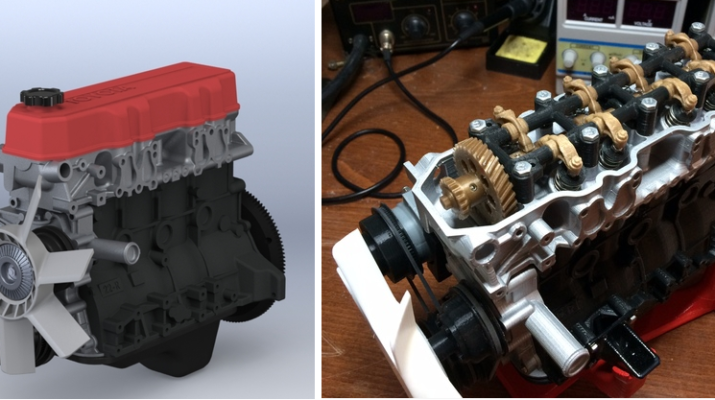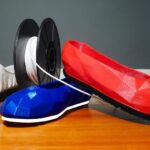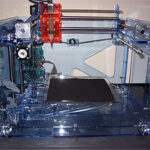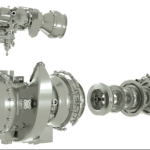

While 3D printing enthusiasts cover the gamut with a wide range of projects from gaming figurines to avante-garde dresses and shoes, most of the serious automotive 3D printed parts and components we report on are left up to the big guns in the automotive industry. They have access, obviously, to powerful industrial 3D printers that these days are pumping out more and more 3D printed parts, leading to faster production times, greater efficiency, easier quality assurance of methods, and most of all — a more attractive looking bottom line.
As with many different types of innovation, groundbreaking production of parts often begins in the more industrial sectors with giant companies encompassing vast resources. Inevitably though, brave and creative souls decide they want to see if they can take a crack at it too, and from there — barriers are broken — and amazing products are made in home workshops and garages.
I’ve never met a car enthusiast or mechanic who didn’t love a project or a challenge, and timeframe is usually not a concern, as their idea of relaxing is tinkering with a large metal vehicle — or in this case — building parts for one. Auto enthusiast Eric Harrell, also a Thingiverse user, is a mechanical engineer who decided to try his hand at designing and 3D printing a Toyota 4 Cylinder Engine 22RE. Composed of 80 separate 3D printed parts, the engine took about 60 hours or more for design time, and over 72 hours to 3D print. While that might sound like a staggering amount of time, keep in mind that the end product is an engine.
Harrell mentions that this is a complex design and it will require a commitment to taking quite a while to complete. Using SolidWorks, Harrell had to deal with capacity issues for his 3D printer, so he scaled the files to 35 percent. Using PLA filament with his RepRap original Prusa, Harrell recommends expecting to use about 1kg of filament for the complete print. Since it is a challenging project and requires skills and equipment, Harrell warns that you do need to pay attention to the limits of your 3D printer in terms of how well-calibrated and ‘robust’ it is, with the option of scaling files down further; however, smaller parts could be become an issue.

Rubber bands were used for connecting the fan pulley and electric motor. Harrell was not able to find pre-made springs at the right size, but improvised as follows, with the note that he would appreciate input from anyone in the community that does know of a spring that will work: “Valve springs were made with 1/4″ ratchet extension as a mandrel and 0.023″ steel mig welding wire. The outer diameter of the spring should roughly be 0.470″. Each spring has 10 loops, and you need to just stretch it long enough to keep the valve closed.”
With all the files available for download from Thingiverse, this is definitely more than a weekend project, unless you plan on entirely giving up on sleep, and while it’s challenging — what a reward at the end to build your own engine. It’s important to note that there could be various kinks that need to be worked out due to variations in 3D printers and materials. The files are also still somewhat of a work in progress, Harrell warns.
While it does take many hours to 3D print, the engine can be printed in installments, producing a fully rotating model, with a working crank, pistons, and valve train — with valves that open and close. Except for several bearings and fasteners, Harrell points out that all the parts are 3D printed.
Is this a project you would feel comfortable taking on? Have you 3D printed automotive parts or components previously? Tell us about it in the 3D Printing Your Own Toyota 4 Cylinder Engine 22RE forum over at 3DPB.com. Check out the video below as well as some additional images:
When it comes to 3D real estate visualization in the USA, our service provides the perfect solution for bringing property listings to life. Through our platform, you can easily access cutting-edge 3D renderings that showcase your real estate projects in a way that attracts potential buyers and investors. Whether it's residential, commercial, or mixed-use properties, our team of experts uses advanced technology to create immersive visualizations that highlight the best features of your property, making it easier for clients to imagine the space as their own.
Through our website, you can quickly get high-quality 3D real estate visualizations that are tailored to your specific needs. With our help, you'll stand out in the competitive real estate market by offering potential buyers a realistic, interactive view of your property. Our efficient process ensures a fast turnaround time, while our attention to detail guarantees that every aspect of the property is represented accurately, giving you a powerful marketing tool to promote your real estate listings.






